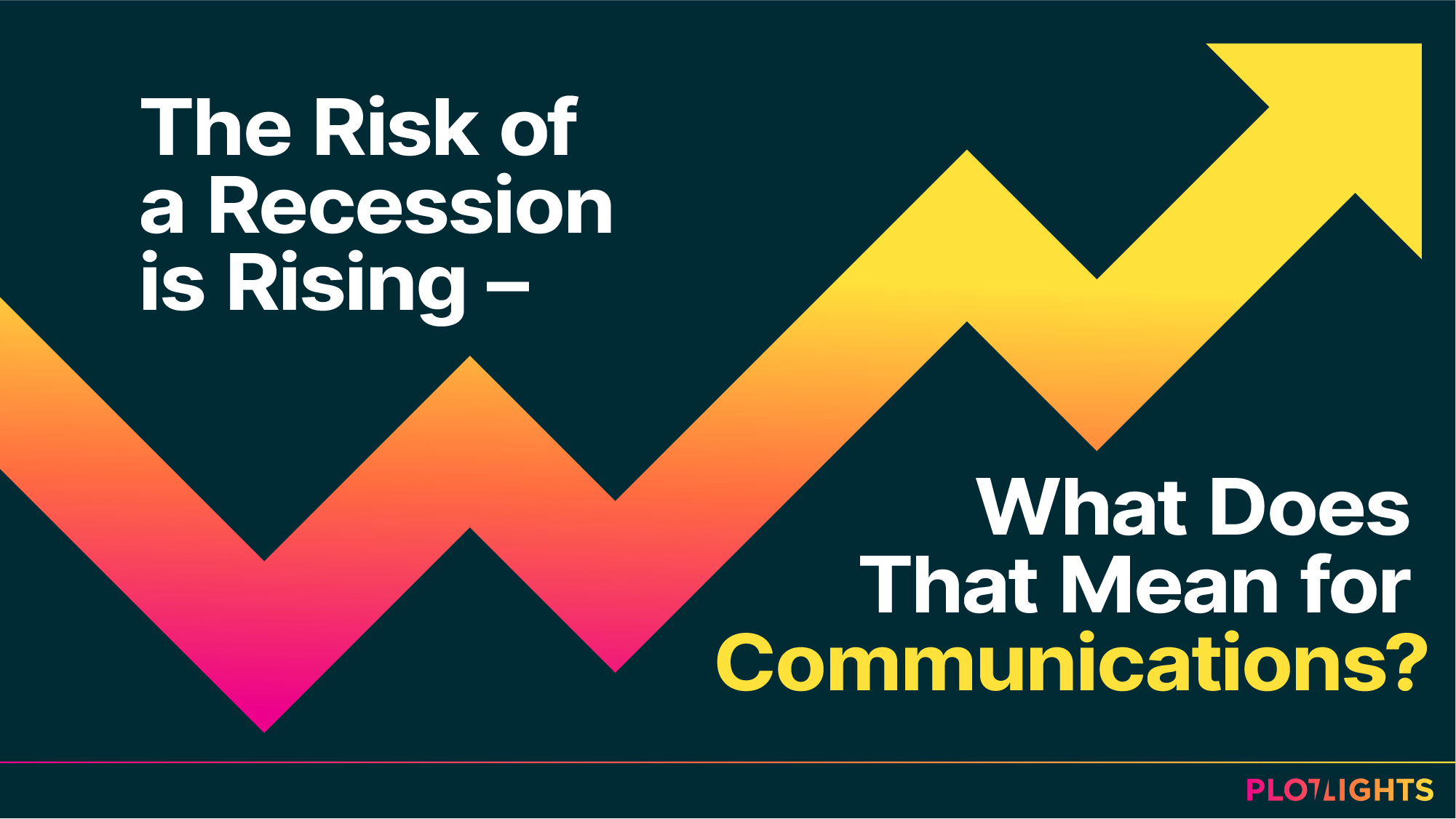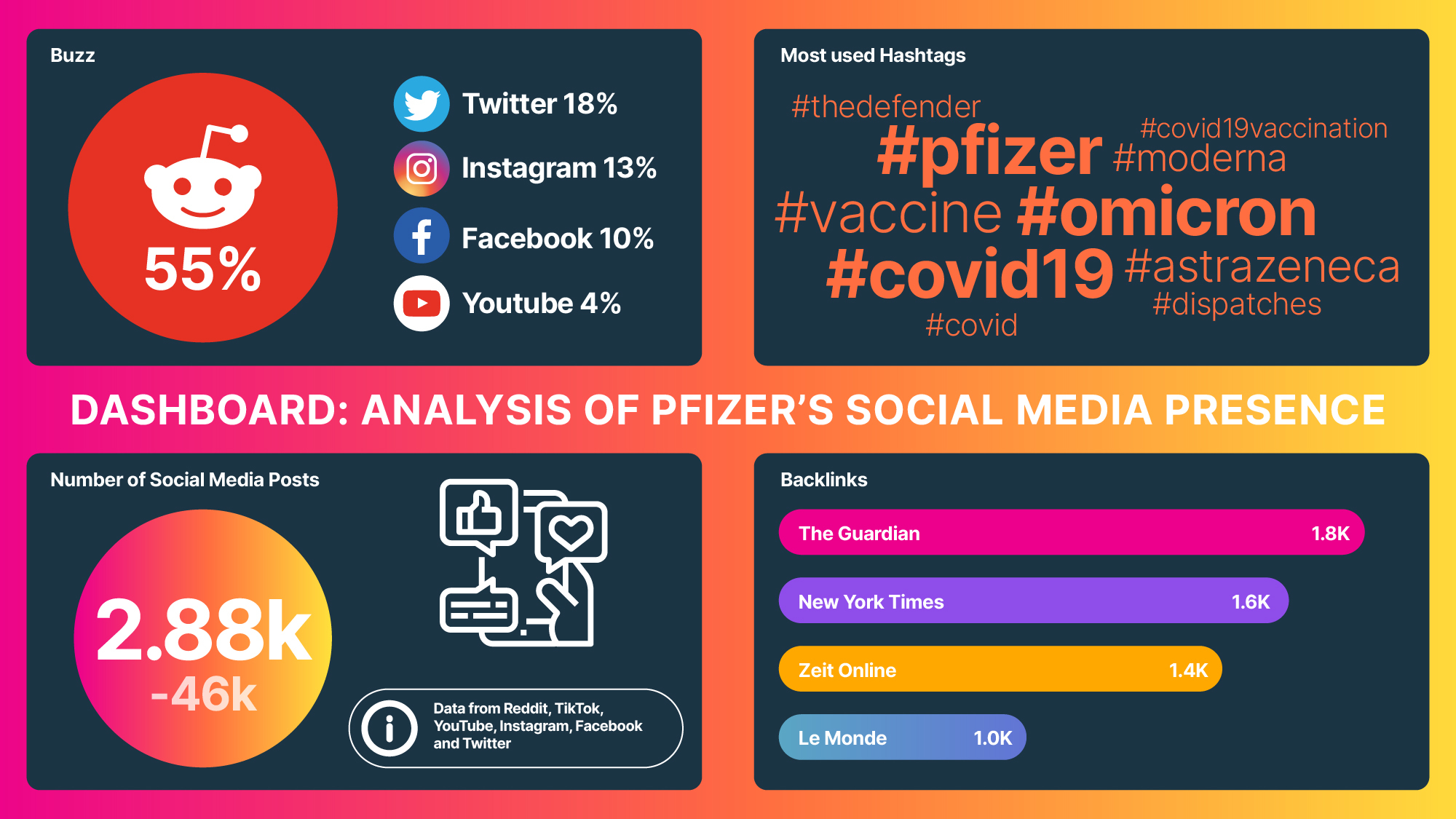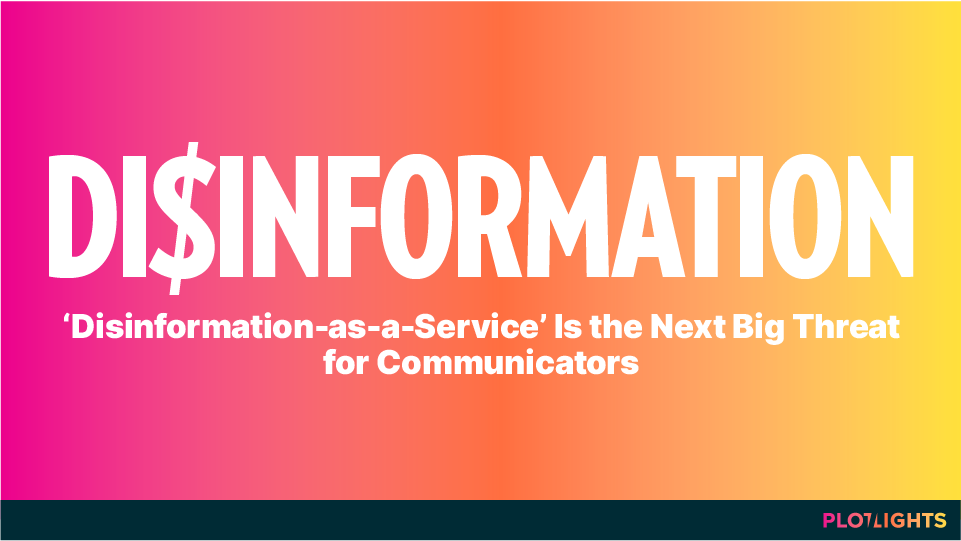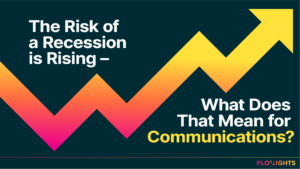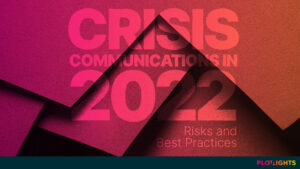Misinformation. Propaganda. Rumors. At scale.
Best encapsulated in the oft-repeated line from recent Nobel Peace Prize-winning journalist Maria Reesa, “a lie told a million times becomes a fact”, the origins of the phrase are timeless with versions of it attributed to Lenin, Hitler, Goebbels, and others over the decades.
At its core though, what we’re talking about is weaponizing disinformation.
Once relegated to the world of social smear campaigns and politics – as the world saw in the 2016 presidential election – disinformation is now rearing its ugly head everywhere, sowing seeds of distrust in everything from climate science to COVID vaccines and now even in the corporate sector as well.
Whether used as an attack to tarnish a politician, question science or tear down businesses or brands, understanding the nature of the threat is imperative to be prepared for it in the future.
What is Disinformation-as-a-Service?
Just as Software-as-a-Service is a distribution model that gives you access to centrally-hosted software for a fee, Disinformation-as-a-Service, or DaaS, works in a fundamentally similar way.
You essentially buy a disinformation campaign – hackers for hire, lying for a price. Mistruths in bulk.
You wonder why? The reasons are endless – Influence. Power. Manipulating the narrative. Bringing down a competitor. Create suspicion.
Also, they’re cheap, making DaaS incredibly attractive. As PwC points out, “disinformation campaigns are asymmetric, meaning they are inexpensive to create and distribute at scale. DaaS providers now charge clients hundreds of dollars to hundreds of thousands of dollars for highly customizable packages.”
The degree to which they’re asymmetric is breathtaking. MIT’s Sloan School of Management concluded that “falsehoods are 70 percent more likely to be retweeted on Twitter than the truth, researchers found. And false news reached 1,500 people about six times faster than the truth.”
With disinformation spreading so fast, does the truth stand a chance?
The Role of the Dark Web for DaaS
First, we need to define the Dark Web. Norton describes it as being “made up of hidden sites that you can’t find through conventional web browsers. Instead, you must rely on browsers and search engines designed specifically to unearth these hidden sites.”
Add to that the anonymity provided by encryption and you have the perfect cover for nefarious pursuits.
Illicit and illegal transactions, content, and activity are rampant on the Dark Web and it’s where you can find everything from drug traffickers to ransomware experts to, yes, DaaS actors lurking in the shadows.
There’s a market for everything and the Dark Web is a go-to source for DaaS. DarkOwl, a Dark Web monitoring & intelligence company, for example, noted “several Ukrainian and Russian-speaking disinformation-as-a-service providers across the darknet with a considerable footprint for information-manipulation related offers and discussions.”
These operators pull from the same toolbox as any other marketing, branding, or public relations professional would. The only difference is the goal – to bring down a competitor, not raise up a client.
Given those ends, the unofficial rule of DaaS is don’t do it yourself. Create plausible deniability.
The Roadmap of a DaaS Scheme
The name of the game is shifting public opinion and the recipe is essentially a carbon copy of the work PR firms and social media marketers do daily. The DaaS “industry” may be in its infancy but using these well-tread PR strategies means maturation was swift.
As the Financial Times discovered, Oxford researchers found “contractors employed to manipulate opinion in 48 countries”.
To that end, organizations, politicians, state actors, and the like can more or less pick from a menu of options:
- Articles
- Blog posts
- Videos
- Social media posts
- Social media accounts and bots for spreading and amplifying the message.
The New York Times, in a deep dive into a Chinese propaganda campaign, detailed a real list of services – and prices – from a private contractor, including:
- Register accounts on foreign social media platforms – 5,000 RMB/month (~$785)
- Disguise and maintain overseas social media accounts – 5,000 RMB/month (~$785)
- Create original videos – 40,000 RMB/month (~$6,275).
Wired, referencing a thorough report from American-Japanese cyber security software company Trend Micro detailed the costs for certain aims:
- Create a fake ‘celebrity’/influencer social media account – $2,600
- Discredit a journalist – $55,000
- 12-month political campaign to change people’s opinions – $400,000.
What are the real-world implications of going down this rabbit hole?
Just take a look at what BioNTech-Pfizer has been dealing with:
- Deutsche Welle – COVID disinformation campaign targeted BioNTech-Pfizer – “A mysterious PR agency offered health bloggers money for spreading false information on the risks posed by the BioNTech-Pfizer COVID vaccine”
- New York Times – Influencers Say They Were Urged to Criticize Pfizer Vaccine – “A disinformation effort to reduce public confidence in Covid-19 vaccines tried to enroll social media commentators in France and Germany”
- Wall Street Journal – Russian Disinformation Campaign Aims to Undermine Confidence in Pfizer, Other Covid-19 Vaccines, U.S. Officials Say – “Websites linked to Russian intelligence services publish false information questioning vaccines’ safety, efficacy”
How Can Communicators Prepare for and Respond to DaaS?
Given the bleak picture painted, it can feel demoralizing going up against an often anonymous enemy whose messages spread faster than wildfire. But, as fellow communications experts, you’re already well equipped to combat disinformation:
- Evaluate risk – Think about and enumerate what risks your company or clients face that could be exploitable. Like a SWOT analysis that focuses only on the “T”
- Understand the motivation – Once you’ve evaluated the threats, dig deeper and understand what would motivate a disinformation attack. To undermine a product? To create doubt in the company? Etc.
- Listen in all directions – Beyond the typical mainstream media and social media sources that you should be monitoring, keep an ear to the edges of the internet. Disinformation-as-a-Service is often found in the dark corners of the web, the disinformation itself is discussed there as well.
- Respond promptly and proactively – Don’t let it linger. Information moves at lightning speed, make sure yours is at the forefront. Just as DaaS providers will build a network of social media commentators, you need to create your own that push the positive story.
- Create a recovery plan – Most importantly, don’t be caught off guard. Take all of the above and create a disinformation plan of action. It may even mean bringing on an expert or creating a chief risk officer.
Key Takeaways
Deception isn’t new. It’s just become more sophisticated. The operation to spread it has become a business of its own right now, leveraging social media and more to get the message out faster than ever before. The attacks are more coordinated, the results swifter.
Manipulation for hire is here to stay and it’s called disinformation-as-a-service.
The solution isn’t to ignore it but rather to face it head-on, acknowledge it, and continue to work hard cementing the truth.

